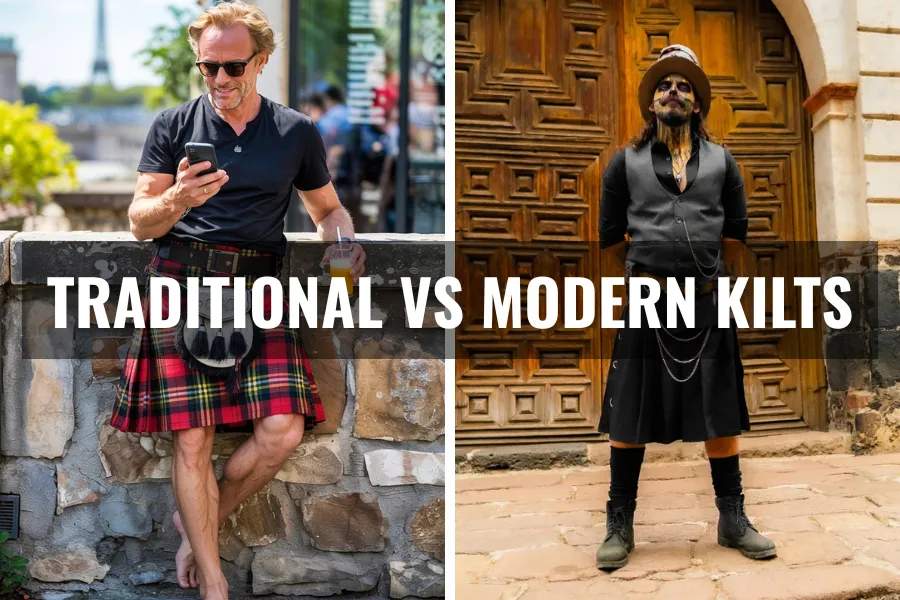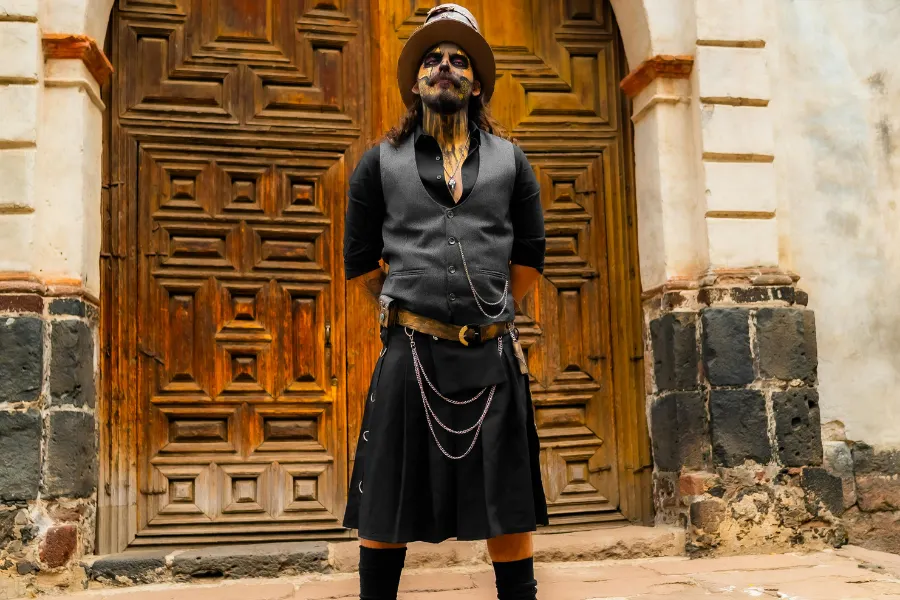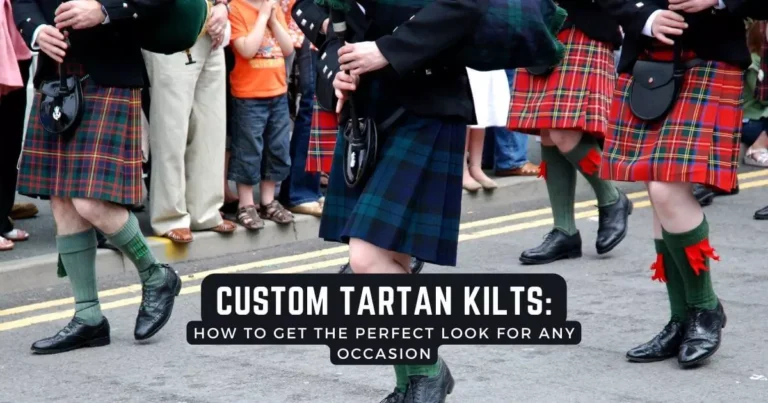Traditional Kilts vs Modern Kilts For Men: Which One Should You Buy?
Choosing between a traditional and a modern kilt isn’t always as straightforward as you might think. It sounds simple on paper—old versus new, heritage versus innovation—but once you start digging into it, the lines blur a little. Maybe more than a little.
And honestly, that’s part of what makes it interesting.
Let’s try to walk through it, keeping in mind that even if there are general “rules,” personal style doesn’t always follow them neatly. It probably shouldn’t, either.
What Makes a Kilt Traditional?
When people say “traditional kilt,” they’re usually talking about a few specific things: heavy wool fabric, deep pleats at the back, a tartan pattern (often linked to a Scottish clan), and a very particular way of wearing it. Traditional Tartan kilts are often paired with formal jackets like the Prince Charlie or an Argyll, a sporran, kilt hose, flashes, ghillie brogues… you get the picture.
The whole outfit is a system, really. Every part has a purpose—even if, today, a lot of it is more about ceremony than practicality.
And traditional kilts aren’t cheap. Good ones are hand-stitched from yards of high-quality wool. They have weight and structure. When you wear one, you feel it—it sways when you walk, folds sharply when you sit down. There’s a certain formality built into the fabric itself.
Still, tradition isn’t everything. Or at least, it’s not only about copying the past.
Enter The Modern Kilt:
Modern kilts for men started showing up as more men wanted something practical, a little more suited to everyday life. Think lighter fabrics like cotton blends, or even leather. Utility kilts, with pockets and snaps instead of buckles, became popular among people who loved the idea of a kilt but maybe didn’t love the idea of wrestling into formalwear for a backyard barbecue.
Some modern kilts keep a few classic elements—pleats, wrap-around construction—but ditch the tartan in favor of solid colors, camouflage patterns, or even denim.
They’re less about heritage and more about flexibility. You can move easily in them, wash them without fear, and wear them for things like hiking, concerts, or just running errands without attracting too much attention. (Unless you want to, of course.)
Weighing The Pros and Cons
So, how do you decide which one to buy?
The truth is, it depends—on the situation, on your personality, maybe even on your mood that day.
Traditional Kilts:
- Perfect for formal events, weddings, graduations, and ceremonies.
- Deeply meaningful if you have Scottish ancestry, especially if you want to represent your clan tartan.
- Durable and built to last decades, sometimes a lifetime.
- Can feel, let’s be honest, a little stiff or intimidating if you’re new to kilt-wearing.
Modern Kilts:
- Ideal for casual wear, travel, festivals, or activities where you need more movement (and pockets).
- More affordable in many cases, though premium modern kilts can still be a big investment.
- Offer a broader range of looks—from rugged to urban cool.
- Might lack the emotional connection that traditional tartans have for some wearers.
There’s no clean winner here. Sometimes, traditional kilts feel like wearing a piece of history. Other times, you just want to go for a walk without worrying about dragging six yards of wool through a muddy trail.
Personal Experience (or, The Day I Wore the Wrong Kilt)
I’ll admit—my first kilt experience was a little rough. I wore a traditional wool kilt to an outdoor summer wedding, thinking it would feel appropriately grand. And it did… for about an hour.
After that, standing in the heat, weighed down by layers of heavy fabric, I found myself glancing jealously at another guest in a lightweight utility kilt. He looked cool, comfortable, relaxed. Meanwhile, I was silently regretting every life decision that had led me to that moment.
Of course, later in the evening, when the formal photos started, there was no question: the traditional look stole the show. And when the old pipers struck up a tune, it felt—somehow—right to be wearing something steeped in that much tradition.
Still. Lesson learned: context matters. Maybe next time, I’d pack both.
Mixing The Two Worlds
You don’t necessarily have to choose sides forever.
Some men opt for what you might call “hybrid” kilts—modern cuts made from traditional tartans, or traditional-style kilts with practical tweaks like lighter lining or subtle pockets. These offer a sort of best-of-both-worlds approach, and depending on your lifestyle, that might make the most sense.
Also, it’s perfectly fine to own more than one kilt. One for formal events, one for everyday adventures. After all, nobody expects you to wear a tuxedo to the grocery store. Why would it be any different with kilts?
A Few Gentle Questions to Ask Yourself Before Buying
Maybe it’s helpful to pause and ask:
- Am I buying this for a one-time event, or do I want something I’ll wear regularly?
- Do I want to represent a specific heritage or clan?
- How much am I willing to invest, both financially and emotionally?
- How comfortable do I feel dressing up versus dressing down?
And perhaps the most important one:
Which one just feels right when you picture yourself in it?
Because at the end of the day, fashion—even when it’s wrapped in history—should feel good. It should feel yours.
Final (Imperfect) Thoughts
There’s no definitive answer to the traditional vs. modern kilt debate, and frankly, that’s probably a good thing. It leaves room for individuality. For experimentation. Even for mistakes—like wearing a full wool kilt in 90-degree heat and learning something about yourself.
Tradition and innovation can coexist more easily than we sometimes think. You don’t have to pick a side forever. Maybe you’ll start with a modern kilt and, years later, find yourself drawn toward the rich folds of a tartan linked to centuries of history. Or maybe you’ll stay firmly in the camp of comfort and function, which, let’s face it, has its own kind of nobility.
Either way, the kilt you choose tells a story. Maybe it’s about where you came from. Maybe it’s about where you’re going.
Or maybe—and this is perfectly fine too—it’s just about finding something that makes you stand a little taller when you wear it.









